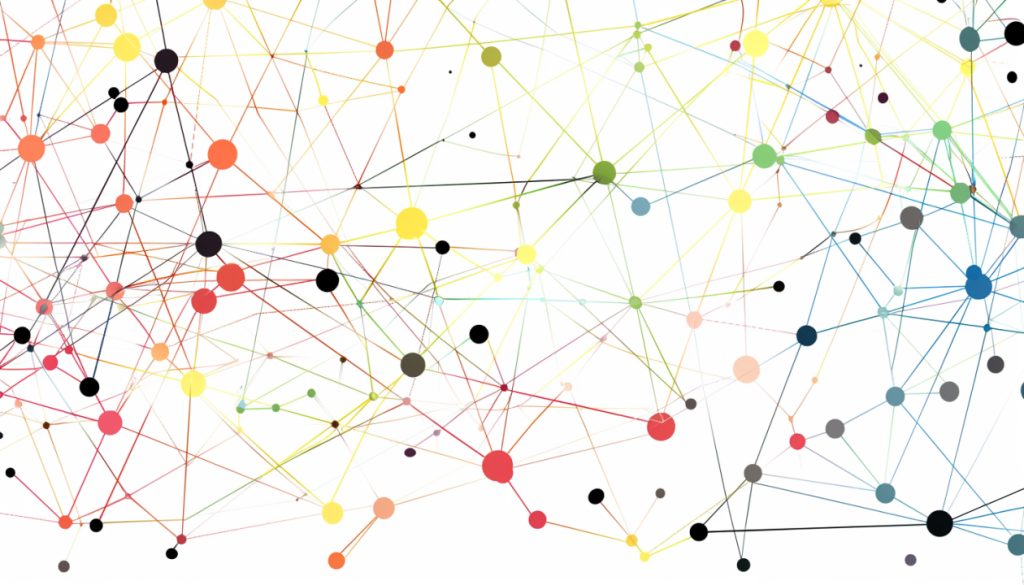
AI Atlas: Orchestrating Intelligence with Message Passing Neural Networks
AI breakthroughs, concepts, and techniques that are tangibly valuable, specific, and actionable. Written by Glasswing Founder and Managing Partner, Rudina Seseri
We live in a connected world. From personal friendships to business transactions, there are many instances where information is intrinsically linked within a wider system. These relationships form a structure called a graph, which is made up of datapoints and the connections between them, referred to as nodes and edges. In a previous post, I explored how the application of machine learning to graph-structured data has given rise to a new class of architectures known as Graph Neural Networks (GNNs).
GNNs have proven useful for representing complex relationships between distinct entities, a capability that was advanced through the development of Message Passing Neural Networks. Since their development at Google Brain in 2017, MPNNs have become the most popular and widely-used form of GNN because of their versatility and efficiency across industries and use cases. In today’s AI Atlas, I explore this technique further and explain what gives it such staying power and relevance in modern business use cases.
🗺️ What are Message Passing Neural Networks?
Message Passing Neural Networks (MPNNs) are a specialized machine learning technique tailored to process data represented as graphs. Expanding on traditional GNNs, MPNNs perform an iterative information exchange among the nodes in the neural network, or points within the graph structure.
As an example, envision a group of people passing notes amongst each other in a room. Each person understands the notes she receives from her neighbors, and then consolidates that information into future messages. Over several iterations, information will spread across the entire room and inform the group’s decision-making, even as each individual will still be influenced by their relationship with immediate neighbors. As a result, there are two unique lenses to view the data: singular data points are defined by their local connections, while surveying the entire room will reveal global patterns and insights. The way information travels and patterns emerge within MPNNs can be thought of in much the same way.
🤔 What is the significance of MPNNs and what are their limitations?
MPNNs introduce an explicit method of exchanging information within a network, unlocking the ability to derive useful insights in an end-to-end manner by iteratively conveying intricate relationships between datapoints. These iterations can be further expanded upon, such as by incorporating attention mechanisms that distill important inputs and enable the model to recognize more subtle patterns. Further benefits of MPNNs include:
- Memory efficiency: MPNNs are able to retain information about a system more accurately and for longer periods of time, as they aggregate information at each node during message-passing iterations rather than attempting to store the entire graph at once.
- Flexibility: A modular architecture enables makes MPNNs applicable to a wide range of domains, from computer vision to natural language processing.
- Global context: MPNNs incorporate global information into node representations through iterations of message-passing. This is beneficial for tasks where global context is crucial, such as understanding how market behavior impacts individual customers.
However, research on MPNNs is subject to ongoing development to mitigate existing limitations, including:
- Interpretability: The structure of MPNNs blurs the impact of individual messages, thus making it difficult to interpret model predictions or diagnose model behavior.
- Resource requirements: The iterative message-passing mechanism in MPNNs introduces computational overhead compared to traditional Graph Neural Networks. This can make MPNNs slower to train and evaluate.
- Scalability: MPNNs face scalability issues with very large graphs, as it requires progressively more iterations of message-passing to send information between nodes that are far apart.
🛠️ Applications of MPNNs
MPNNs’ capabilities in seamlessly accommodating diverse data structures, from molecular networks to knowledge graphs, underscores their utility in addressing a variety of practical applications such as:
- Social Network Analysis: With an understanding of both global patterns and local behavior, MPNNs can analyze nuanced connections within social networks to classify individuals, predict relationships, and identify communities.
- Recommendation Systems: MPNNs are employed to model user interactions with different products or product features, allowing for personalized recommendations and stronger customer engagement.
- Transportation and Logistics: The connections and routes between physical locations can not only be represented as points on a graph, but information about one site – such as congestion or weather – can be used to rapidly inform the condition of nearby sites, optimizing decisions related to mobility.
Stay up-to-date on the latest AI news by subscribing to Rudina’s AI Atlas.